New Data: 5 Ways to Improve Your DEI Impact in 2023
How did organizations do with their diversity, equity, and inclusion (DEI) efforts in 2022? After two years of unprecedented investment in DEI, are organizations — eager to make progress — investing in the right areas?
In our new “State of DEI: 2022 Data & 2023 Trends” report, we seek to answer these questions using aggregated, anonymized data from organizations who used our Blueprint strategy and analytics platform to assess their DEI maturity, benchmark key metrics, and create strategies that will drive impact in 2022. We compared that data with our research and insights from working with more than 1,000 organizations on what’s most likely to drive DEI impact.
Encouragingly, we found that the majority of companies have built a strong DEI foundation in areas that are critical to success: strategy, data collection, talent lifecycle processes, infrastructure, and communications. However, in each of these areas, far fewer organizations built on that foundation with programs or initiatives that will drive long-term, sustainable results (e.g. a more diverse and inclusive workforce).
You can find more detailed data in the report (download here), as well as suggestions on inclusion trends that companies should prioritize in 2023 and beyond. Below is a quick overview of five key areas.
Build Accountability into DEI Strategies
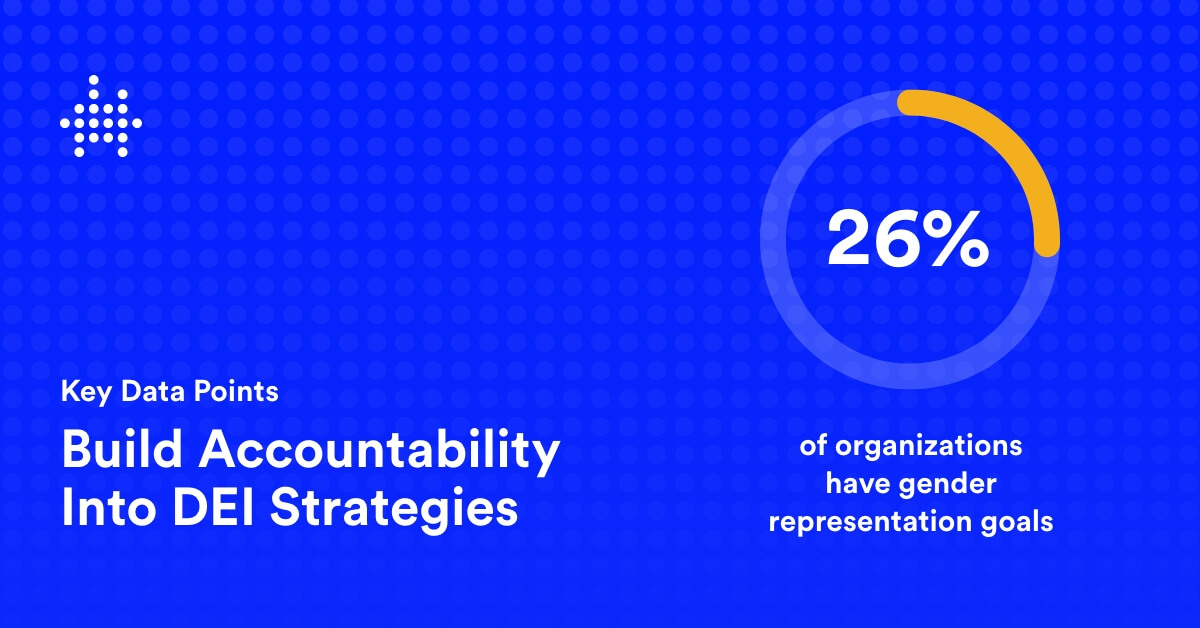
While a majority of the companies in our Blueprint dataset have a strategy in place (60%) and budget to support their DEI efforts (58%), few (<= 26%) have specific gender or race representation goals they are working towards. And, many organizations are not effectively engaging with executives to help make DEI efforts a success.
Companies that want to see meaningful change in DEI need to define short- and long-term goals, measure key data points, and create leadership accountability for outcomes.
Analyze DEI Data Throughout the Talent Lifecycle
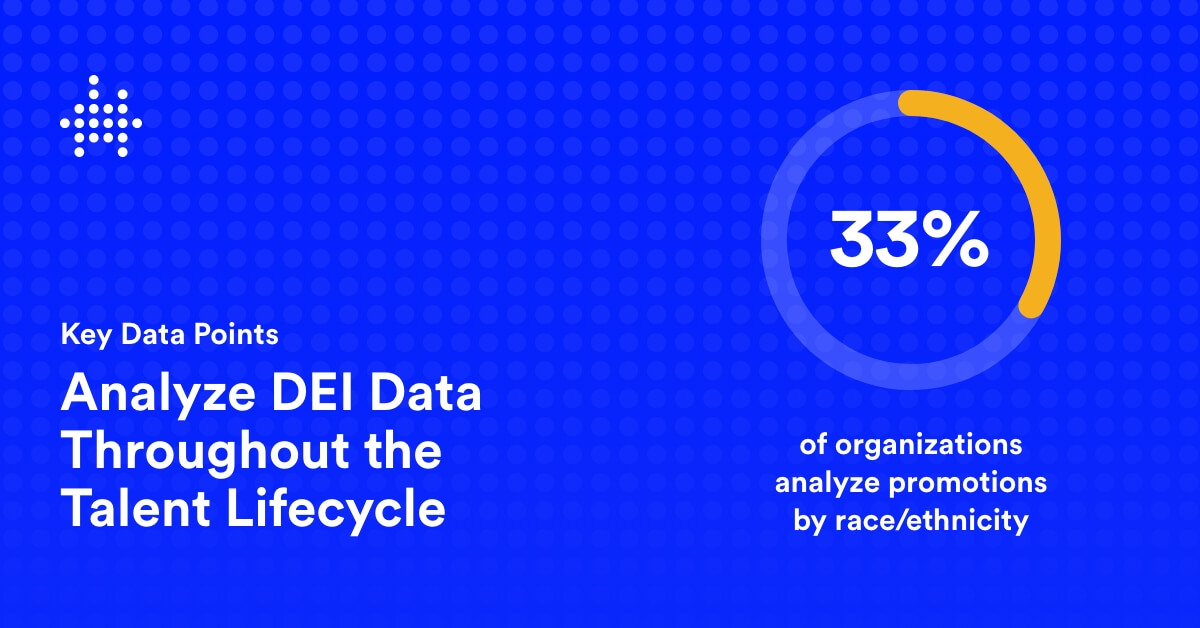
While the vast majority of companies in our dataset are collecting foundational data from employees and candidates in their HR information (88%) and applicant tracking systems (69%), they’re not analyzing that data and monitoring trends over time. For example, only 33% of companies analyze promotions and 40% analyze attrition by race/ethnicity.
Companies that see the most progress on DEI don’t treat it as an independent initiative. Instead, they embed key performance indicators into every aspect of their talent lifecycle, from how they attract and hire candidates to how they evaluate, grow, and reward their team. By just analyzing the data they already have on hand, organizations are ultimately contributing to a strong end goal. (For more on how you can measure key data points, watch our webinar on demand.)
Understand How People Experience Culture Differently Depending on their Identity
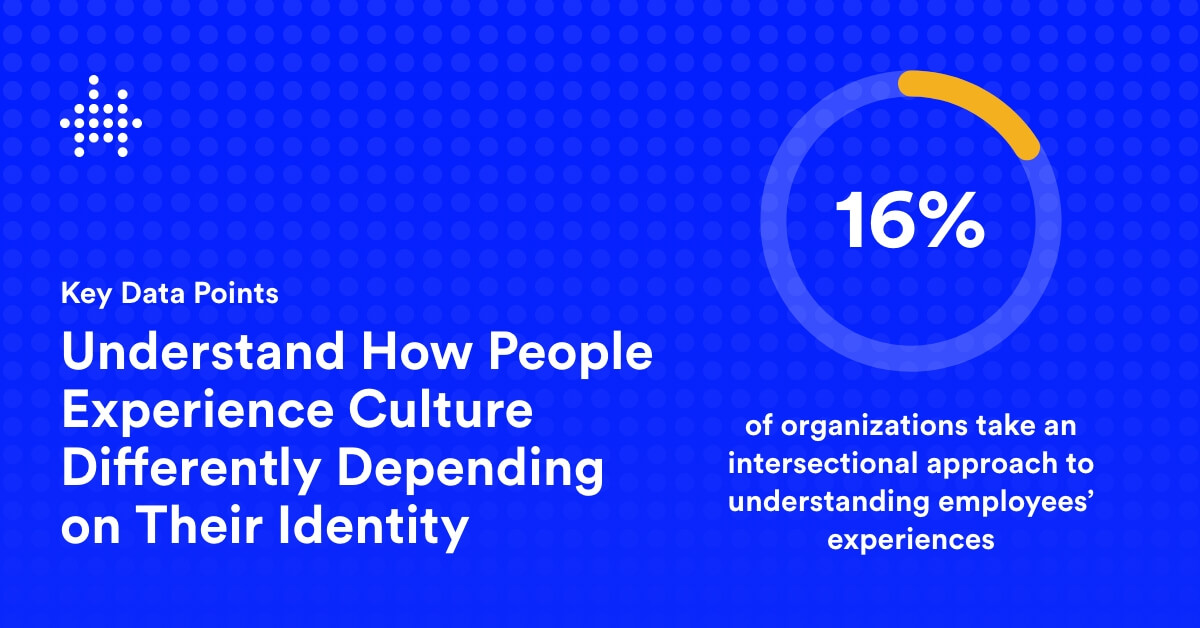
While many organizations (85%) collect feedback on the employee experience, most look at how all employees are feeling on average. However, few take the additional steps to understand the ways in which people from different backgrounds experience the culture differently: more than half of companies aren’t analyzing engagement survey data by gender, and even fewer analyze that data by race/ethnicity.
In our work across company sizes and industries, we’ve seen that differences in experience are very common. By analyzing survey data by demographics, and including a wide range of identities in this analysis, organizations can build an understanding of gaps in experience to enhance employee satisfaction and create meaningful progress in the workplace.
Create a Framework for DEI Communications
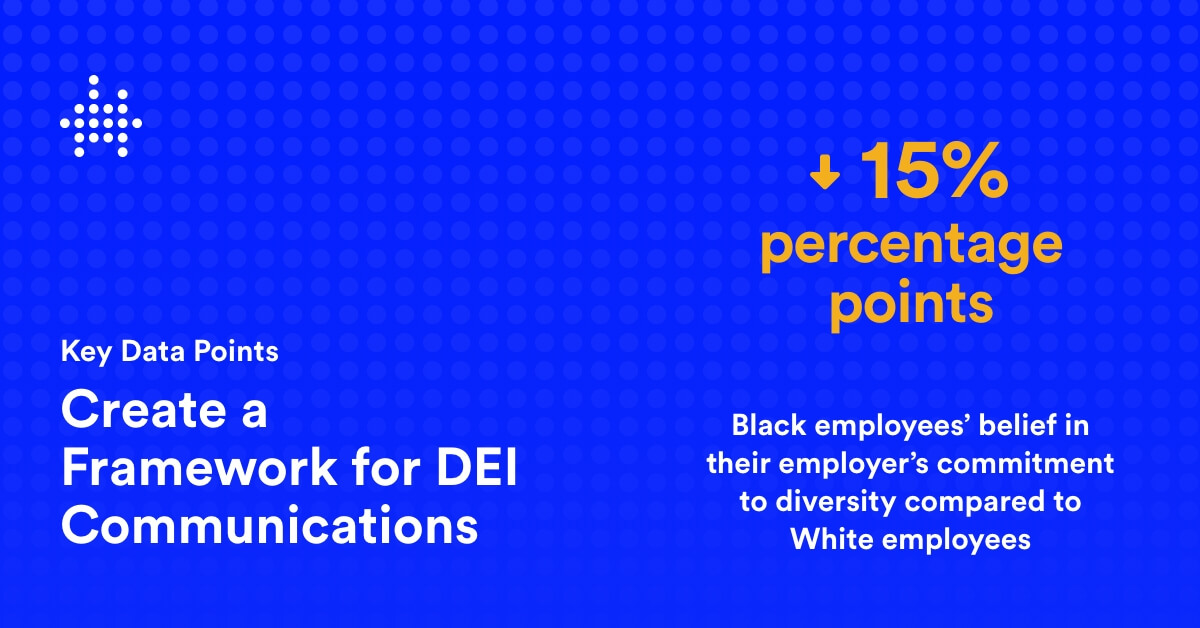
In 2020, many organizations realized they needed to quickly determine how to respond to external events that were affecting communities within their organization. With that, we saw the majority of organizations (60%) go beyond rote EEOC statements to develop internal DEI statements that made clear their philosophy on inclusion and how it impacted their work. Executives also learned to communicate proactively about the importance of DEI (65%).
However, according to aggregated data from our Inclusion Surveys, that message might not be resonating equally with employees from different demographics: 62% of White employees had a favorable view of their employer’s commitment to diversity while only 47% of Black employees had the same sentiment. Part of that might stem from inconsistent responses to what’s happening in the world.
While not every external event warrants communications to employees, instead of making these decisions ad hoc, we recommend creating a process for when to respond, the channels to use, and who will speak.
Build Infrastructure to Sustain DEI Efforts
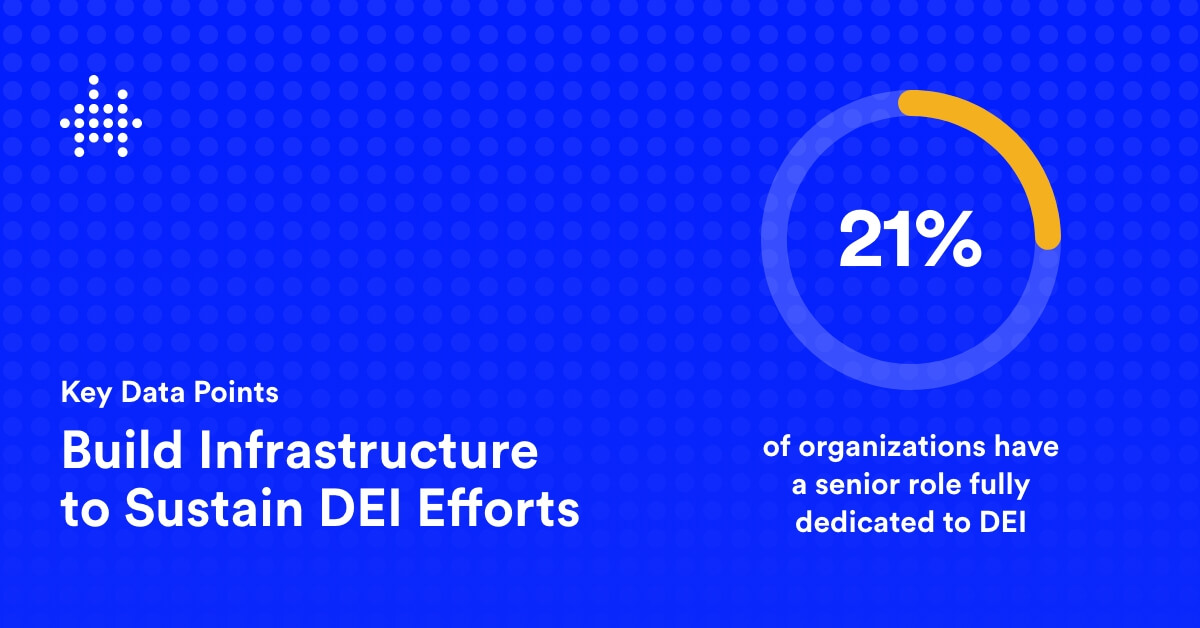
Finally, in 2023, to drive the impact many organizations are so eager to see, they should consider how they’re resourcing DEI. For example, while more than half of the organizations in our dataset are standing up employee resource groups (ERGs), they may not be accounting for the supporting infrastructure required to sustain these efforts over time: only 15% of companies understand how much time ERG members are investing, and only 21% compensate, reward, or recognize employees for their ERG involvement. In addition, only 21% of companies have a senior role fully dedicated to advancing DEI initiatives. There are many models of responsibility for DEI, but one of the most effective is having a senior role fully dedicated to it.
Whether or not an organization is at the right place and time for a dedicated DEI role is a nuanced decision. However, in 2023, even if organizations cannot invest in a DEI leader, they need to consider who is responsible for driving DEI forward and ensure they have the resources and support they need to be successful. Focus groups of employees and HR professionals can work together to promote diversity by discussing various aspects of the workplace. You can also get involved with a global business community of HR leaders and DEI experts to discuss the larger impact of prioritizing DEI initiatives.
Contact Us Today
SEI strategies can identify initiatives for gender equality, pay equity, and employees of diverse backgrounds. All of these components come together to create an inclusive workplace and great company culture. For more data and insights from our experts on how companies can accelerate their DEI strategy in 2023 and beyond, download the report.
December 6, 2022

 Our website uses cookies to distinguish you from other users of our website. This helps us to provide you with a good experience when you browse our website and also allows us to
improve our site. By continuing to browse our website, you’re agreeing to our use of cookies. For more information, please read our
Our website uses cookies to distinguish you from other users of our website. This helps us to provide you with a good experience when you browse our website and also allows us to
improve our site. By continuing to browse our website, you’re agreeing to our use of cookies. For more information, please read our
